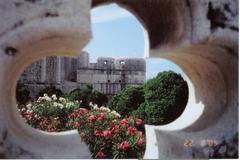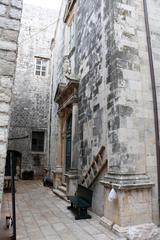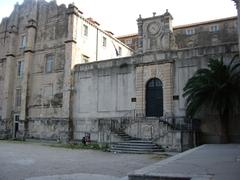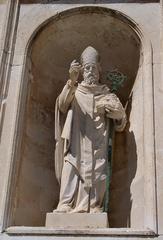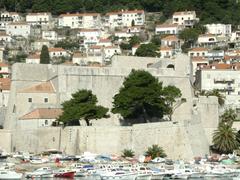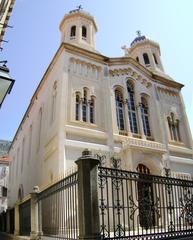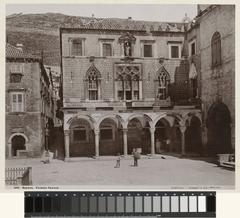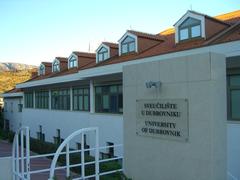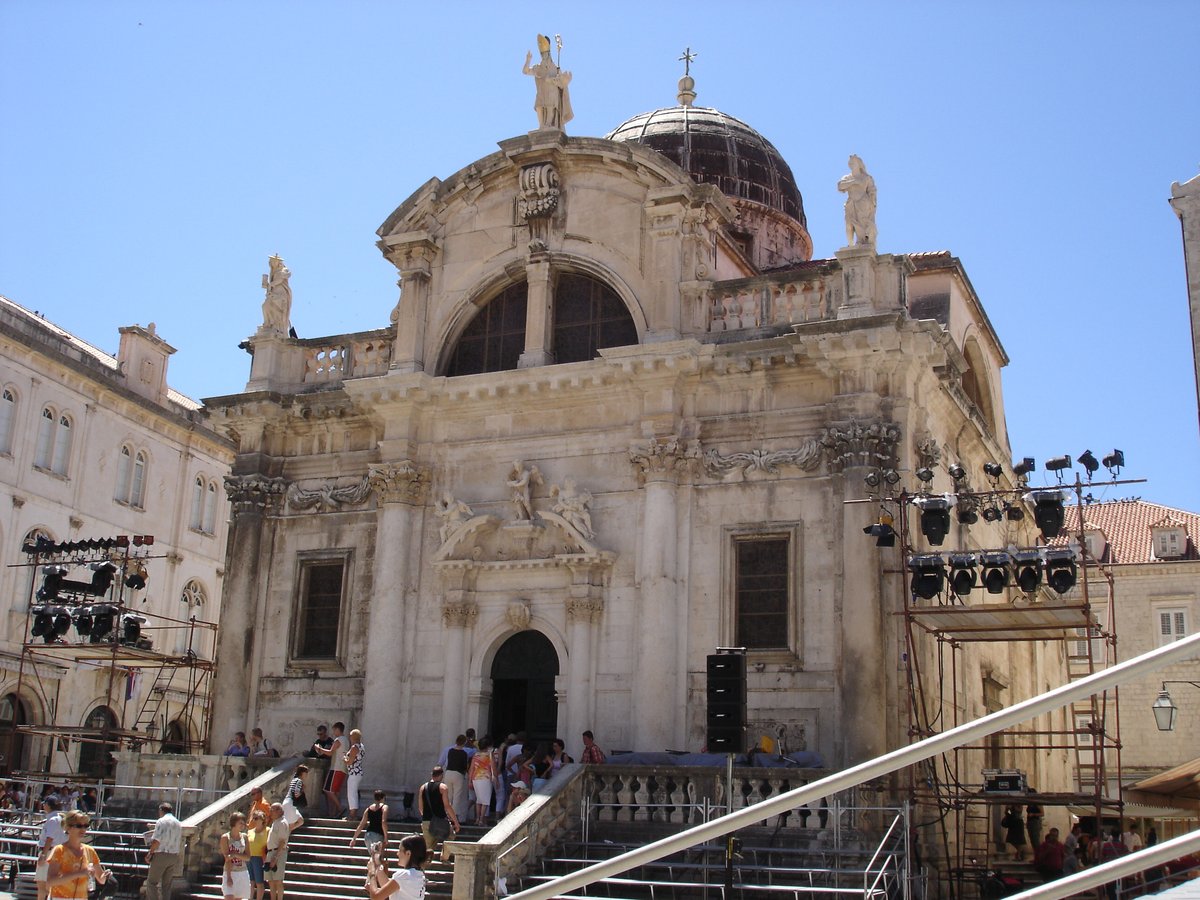
St Blaise’s Church, Dubrovnik: Visiting Hours, Tickets, and Historical Significance
Date: 15/06/2025
Introduction
St Blaise’s Church (Crkva svetog Vlaha) stands as a defining landmark in the heart of Dubrovnik’s Old Town. Revered as the city’s spiritual protector and architectural jewel, the church is dedicated to St Blaise, the patron saint who, according to legend, saved Dubrovnik from a Venetian attack in the 10th century. Today, St Blaise’s Church is both a vibrant center of worship and a living testament to the city’s resilience, culture, and faith. This guide provides a detailed overview of the church’s history, cultural significance, visiting hours, accessibility, and travel tips for an enriching experience in Dubrovnik.
Table of Contents
- Introduction
- Origins of St Blaise’s Veneration in Dubrovnik
- Construction and Architectural Highlights
- St Blaise’s Relics and Their Significance
- Visiting Information: Hours, Tickets & Accessibility
- Cultural and Religious Significance
- Events and Special Occasions
- Practical Visitor Tips and Etiquette
- Nearby Attractions and Suggested Itineraries
- Frequently Asked Questions (FAQ)
- Summary and Travel Information
- References
Origins of St Blaise’s Veneration in Dubrovnik
St Blaise (Sveti Vlaho) has been central to Dubrovnik’s identity since the year 971, when, according to tradition, he appeared to the local priest Stojko to warn of a surprise Venetian attack. The city’s defenders heeded this warning, and Dubrovnik was spared from assault—an event that led to St Blaise’s immediate adoption as the city’s patron and protector (Reliquarian; Kompas.hr). His legacy is celebrated not only in legends and art but also through annual festivities that have endured for over 1,000 years.
Construction and Architectural Highlights
Historical Development
The original church, built in the Romanesque style, was repeatedly damaged by disasters, most notably the devastating 1667 earthquake and a fire in 1706. The present Baroque church was constructed between 1706 and 1715, designed by Venetian architect Marino Gropelli. Its architecture reflects Dubrovnik’s historical ties to Venice and embodies the city’s aesthetic grandeur (The Dubrovnik Guide).
Exterior and Interior Features
- Façade and Entrance: The church features an ornate stone façade with Corinthian columns, a wide staircase, and intricate sculptural details.
- Dome and Layout: Built on a Greek cross plan, the church’s central dome is a landmark visible across Old Town.
- Artistic Treasures: Inside, the marble high altar houses a 15th-century silver-gilt Gothic statue of St Blaise holding a model of medieval Dubrovnik. This statue survived both the 1706 fire and earlier disasters, earning a reputation as miraculous (EWTN).
- Other Artworks: The church also displays stained glass by Ivo Dulčić, 17th-century paintings, and liturgical treasures.
St Blaise’s Relics and Their Significance
St Blaise’s relics—including his head, arm, and leg—are preserved in ornate reliquaries in the Dubrovnik Cathedral Treasury. During the annual Feast of St Blaise, these relics are paraded through the city in a grand procession, allowing the faithful to venerate the saint and seek his intercession, particularly for protection against throat illnesses (Reliquarian; EWTN).
Visiting Information: Hours, Tickets & Accessibility
Location
St Blaise’s Church is centrally located at Luža Square, at the eastern end of Stradun, Dubrovnik’s main promenade. The Old Town is pedestrian-only, easily accessible from Pile or Ploče gates (dubrovnik-travel.net).
Opening Hours
- Regular Hours: Daily, 9:00 AM – 8:00 PM (may vary during holidays and special events).
- Seasonal Variations: Extended hours during the summer festival season (June–September) and the Feast of St Blaise.
- Check Local Listings: For up-to-date information, consult the Dubrovnik Tourist Board or church notice boards.
Tickets and Admission
- Admission: Free for individual visitors.
- Special Events: Tickets may be required for concerts, guided tours, or festival events.
- Donations: Voluntary contributions support church maintenance and cultural programs.
Accessibility
- Wheelchair Access: The church is accessible via a ramp at the main entrance; assistance is available upon request.
- Mobility: The Old Town’s cobblestones can be challenging; contact the church or Tourist Board in advance for support.
Cultural and Religious Significance
St Blaise’s Church is at the core of Dubrovnik’s religious and civic life. The annual Feast of St Blaise, held on February 3rd, is the city’s most important celebration and is recognized by UNESCO as Intangible Cultural Heritage (UNESCO). The festivities include processions, the blessing of throats, release of white doves, and city-wide celebrations that welcome both locals and visitors (Kompas.hr; Dubrovnik Times).
The church also serves as a venue for concerts and cultural events, especially during the annual Dubrovnik Summer Festival (justdubrovnik.com).
Events and Special Occasions
- Feast of St Blaise (February 3rd): Features processions, throat blessings, and vibrant street life.
- Dubrovnik Summer Festival (July–August): The church and its square host concerts, performances, and ceremonial events.
- Masses and Religious Ceremonies: Regular services and special holy day masses are held throughout the year.
Practical Visitor Tips and Etiquette
- Dress Code: Modest attire is required; shoulders and knees should be covered, and hats removed inside.
- Photography: Allowed without flash except during services; always be respectful of worshippers.
- Visitor Conduct: Maintain silence during religious ceremonies; non-Catholics are welcome to observe.
- Facilities: No restrooms inside the church; public facilities are available nearby.
- Best Time to Visit: Early mornings or late evenings for fewer crowds; during the Feast of St Blaise for a unique cultural experience.
Nearby Attractions and Suggested Itineraries
St Blaise’s Church sits amid Dubrovnik’s most significant landmarks. Combine your visit with:
- Orlando’s Column
- Sponza Palace
- Rector’s Palace
- Dubrovnik Cathedral
- City Walls
Suggested itinerary:
- Morning: Walk the city walls for panoramic views.
- Midday: Visit St Blaise’s Church and Sponza Palace.
- Afternoon: Explore the Rector’s Palace and Cathedral.
- Evening: Relax at a café on Luža Square.
Frequently Asked Questions (FAQ)
Q: What are the opening hours of St Blaise’s Church?
A: Generally 9:00 AM – 8:00 PM daily, with possible seasonal variations.
Q: Is there an entry fee?
A: Entry is free; donations are welcome.
Q: Are guided tours available?
A: Yes, local tour operators and tourist offices offer guided tours.
Q: Is the church accessible?
A: Wheelchair access is available; contact in advance for assistance.
Q: Can I take photographs?
A: Yes, except during services and using flash.
Q: What is the best time to visit?
A: Early morning, late evening, or during the Feast of St Blaise.
Summary and Travel Information
St Blaise’s Church is a must-visit destination in Dubrovnik—an architectural treasure and the focal point of the city’s enduring traditions. Its free admission, central location, and deep historical roots make it accessible and meaningful for all visitors. Whether you are drawn by Baroque artistry, religious history, or the vibrant atmosphere of Luža Square, the church offers a unique window into Dubrovnik’s soul.
To make the most of your visit, check current hours, respect local customs, and consider timing your trip to coincide with one of the city’s major festivals. For insider tips, cultural updates, and guided tours, download the Audiala app or consult the official Dubrovnik tourism resources.
References
- Saint Blaise, Protector of Dubrovnik and Patron Saint of Throat Illnesses (Reliquarian)
- Visiting St. Blaise’s Church in Dubrovnik: History, Tickets, and Tour Tips (Kompas.hr)
- Church of St. Blaise Dubrovnik: Visiting Hours, Tickets & Historical Guide (The Dubrovnik Guide)
- St Blaise’s Church Dubrovnik: Visiting Hours, Tickets, and Insider Tips (dubrovnik-travel.net)
- UNESCO Intangible Cultural Heritage: Festivity of St Blaise
- Dubrovnik Summer Festival Official Opening
Explore more about Dubrovnik’s history and culture in our related articles, and enhance your journey with the Audiala app.


